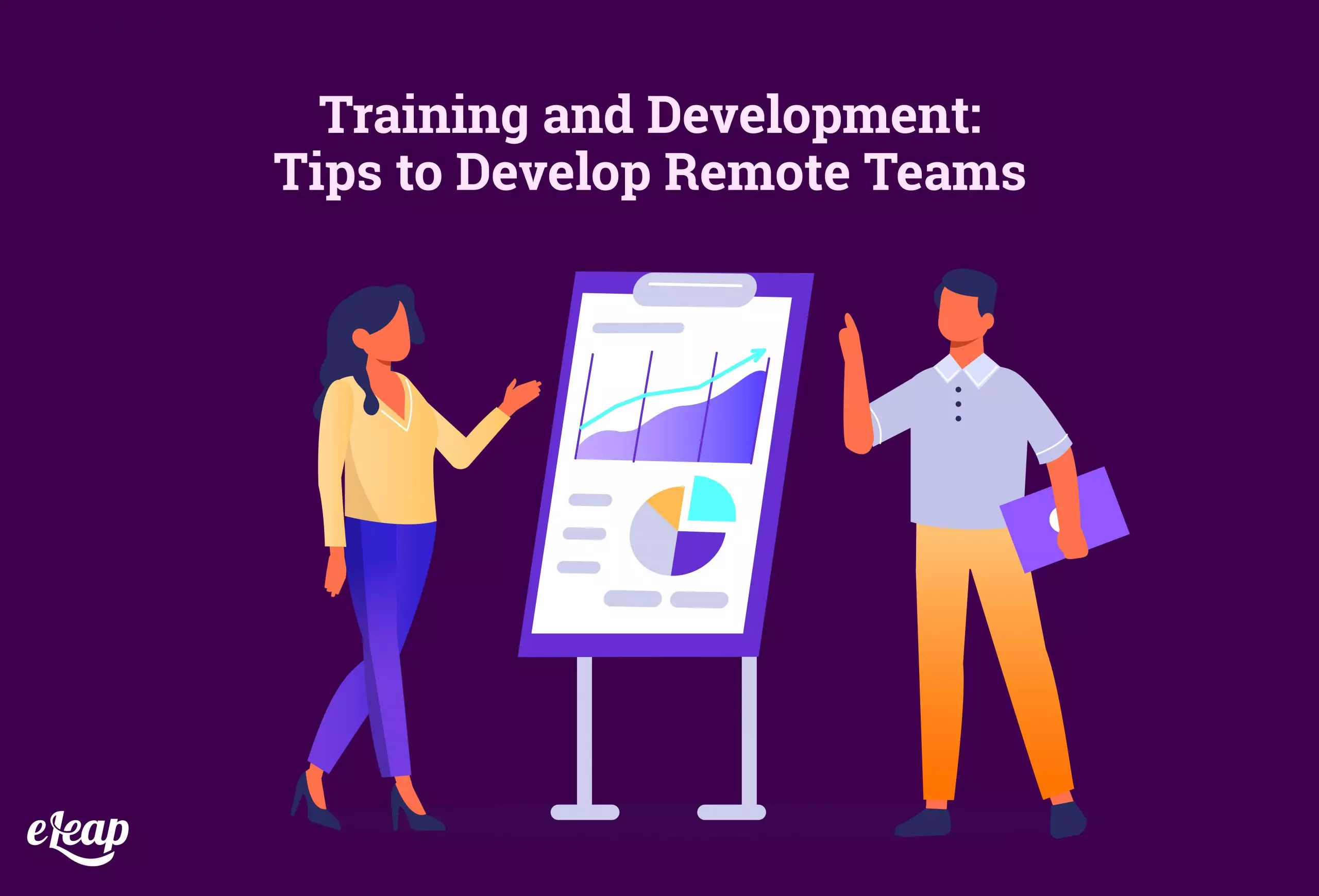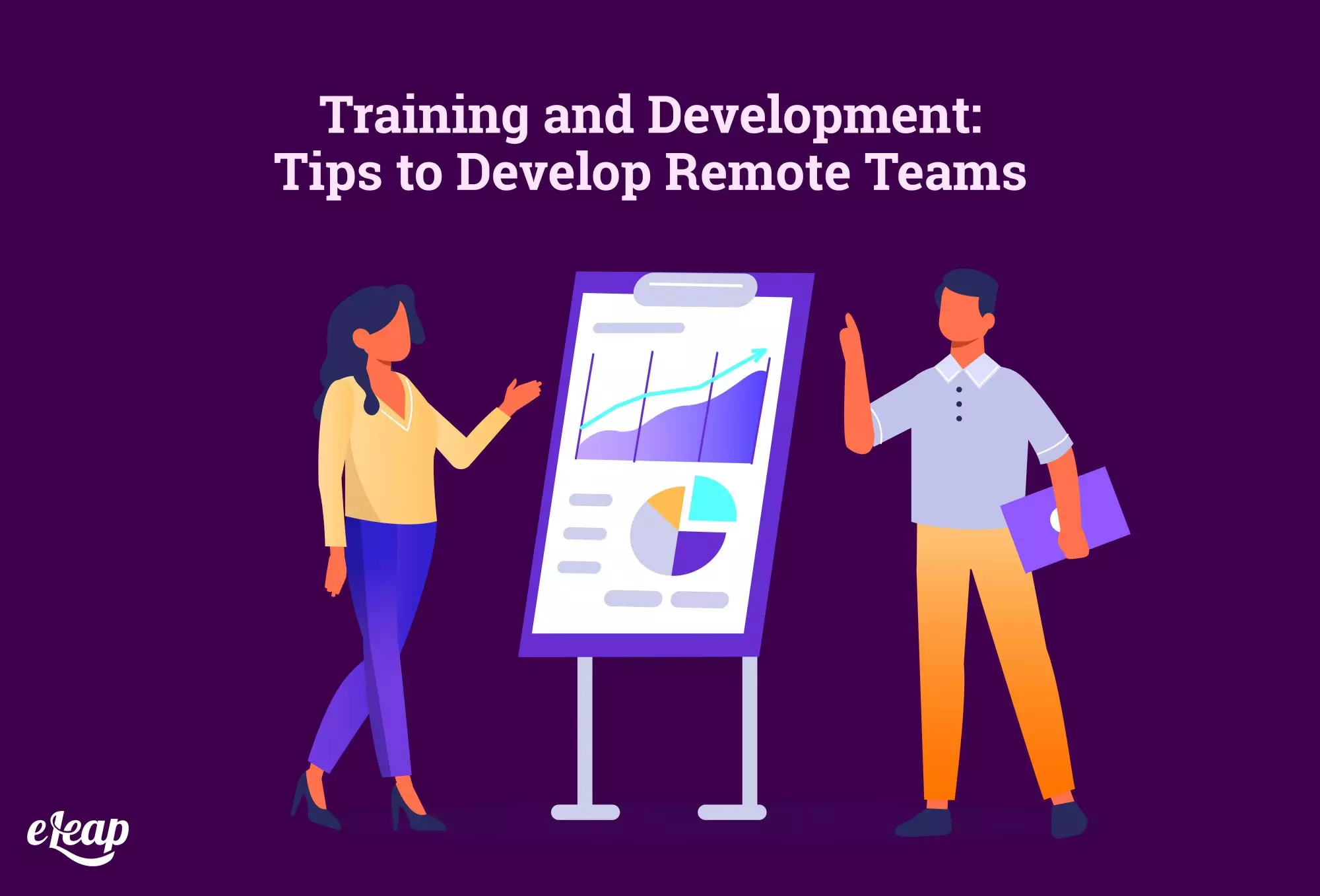Training and Development: Tips to Develop Remote Teams

With the ongoing impact of COVID-19 on organizations large and small, many are experiencing some pretty interesting challenges. Performance management has become more difficult, for instance, but so has the flip-side of the coin – learning and development. Given how critical it is to develop your teams and help employees become better both professionally and personally, it’s natural to wonder how you’re supposed to handle training and development in a remote-work situation.
While it can be enormously challenging to handle training and development for remote workers, it’s not impossible. In fact, it may be simpler than you think. In this post, we’ll cover some of the most critical tips to help ensure that your training and development efforts are as successful as possible.

Choose the Right Model
Online training often implies using something like Zoom or Microsoft Teams to replicate a classroom-like learning experience. While that’s possible, even beneficial in some cases, it’s far from the only option out there. It comes down to knowing what kind of learning is needed.
Synchronous learning is when everyone in a group needs to learn the same thing at the same time. Classroom-based instruction, instructor-led lectures, and the like are good examples of this. However, you may need asynchronous learning.
In this situation, your learners have different needs and requirements, often based on their job responsibilities and/or career paths. Here, something like a learning management system is the better option, as it provides access to different content for different employee logins.
You’ll also find blended learning might be an option. This combines synchronous and asynchronous learning into a single, cohesive whole. For instance, within your LMS, you might have modules that individual employees need to complete, but you will also have recorded webinars and lectures that groups of employees can complete at the same time.
Make Sure Your Technology Is Up to Date
In a remote work and training situation, technology is the cornerstone of success. Without the right tech, nothing’s going to work right. You must have the right technology underpinning your training and development efforts (and your projects and initiatives, of course).
Part of this is ensuring that individual employees have the technology necessary to access the LMS for training. You cannot assume that each employee has a powerful desktop or a modern laptop. Thankfully, this is a simple fix, although it will certainly represent an investment. Check with each employee and make sure they have:
- A computer capable of handling online work and learning responsibilities
- A headset and microphone for communications
- An ergonomic keyboard and mouse
You’ll also need to consider your company’s technology stack when it comes to remote training. A few of the things you’ll need to invest in include the following:
- Webinar Software: You’ll find a ton of options out there, including Zoom (free), Microsoft Teams (paid), Webex, and more. There’s no “right” option for everyone, and you’ll need to know what works for your needs, employees, and budget.
- Training/Classroom Software: Options here include Larksuite and GoToTraining, among others. This software is used to recreate an in-person classroom experience, and can also be used for things like assessments.
- LMS: Your learning management system is of critical importance. It needs to be modern enough that employees can easily navigate it, and robust enough that it can provide access to the widest range of learning materials possible. It should be capable of not just text-based learning, but also webinars/video-based training and even gamified training content.
- Content Authoring Capabilities: Whether it’s a separate eLearning authoring tool or it’s a feature built into your LMS, you need the ability to create and distribute training material. This gives you tremendous amounts of flexibility, ensures that you can create your own content if it’s not available from another developer and more.
Work on Company Culture
While most of our tips have been focused on making sure that you have the technology and the training content necessary, we need to touch on company culture. Many organizations mandate learning, but are then faced with resistance from their teams. People drag their feet about completing modules or avoid it until forced.
This often comes down to your company’s culture. If learning and development aren’t priorities for your leadership, then why would your team members be any different? Remember that attitudes trickle down from above.
Instead, it’s important that you intentionally create a culture where learning and development are not just priorities, but imperative. You can do this in several ways, including:
- Tie L&D to Career Advancement: If you want to develop a positive culture where employees value learning, tie it to their career development. As they master new skills, move them up along their preferred career path. Make it matter to their success and it will matter in their daily routine.
- Make It Easier: How easy is it for your team members to complete learning and development content? Give them time to do so and offload some of their other responsibilities so it’s easier to complete courses and modules without adding hours of extra work to their day.
- Make It Fun: Gamification of your training materials can make employees happier to participate. You don’t necessarily need to turn the lessons into games, but adding game-related elements like leaderboards, high scores, and more can add an element of fun that encourages learners to keep going.
Achieving Training and Development Success
Ultimately, there is no magic wand or silver bullet that’s going to fix your remote learning woes. It will require a deep dive into any issues you might have, a willingness to experiment, the ability to ensure your remote workers have the technology necessary for success, and more. However, this isn’t an insurmountable issue. You can overcome it and ensure that your team members learn what they need for personal and professional success.